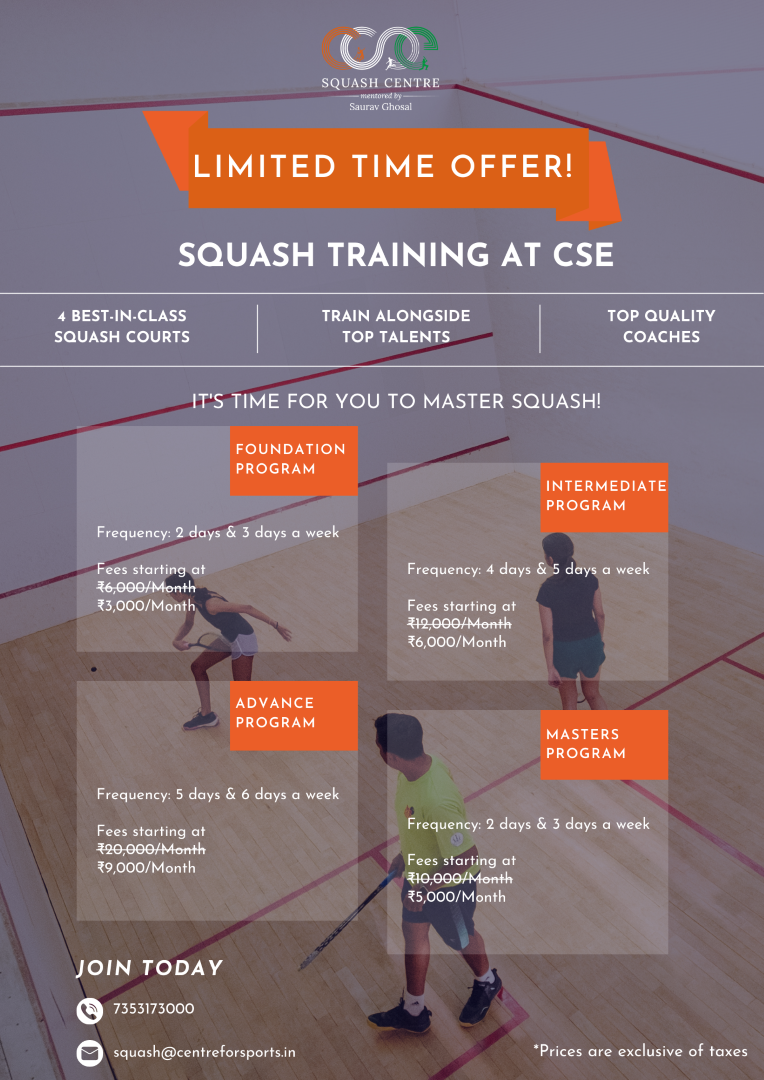It is a long walk to the stadium. Azim and Kautuk, two long-time friends heading to their morning training sessions, often preferred walking over using the electric-powered skateboard, the NucliSkate. The NucliSkate, powered by string cells, could take them directly from their rooms in the Sports Excellence Centre (SEC) to their respective training fields. They could easily grab a NucliSkate from the charging dock outside their rooms and ride to their destinations. The SEC is a massive multi-sport facility, the best in the country. It is home to almost all the nation’s elite athletes, as well as the budding sports stars training to catch that elite train.
The friendship of Azim and Kautuk is the talk of the town at the centre. As beautiful as it is off the field, it turns into a fierce rivalry on the field. They constantly swap the No.1 and No.2 rankings in World Badminton and have finished top two in most tournaments in the past two years. Both of them will be eyeing the Gold this year at the Olympics, the Bengaluru 2100.

Their walk to the stadium today felt longer than usual, perhaps due to the cold weather. The monsoon had just begun, and the city had started to cool down. After walking for about 100 meters, Azim exclaimed, “It is so easy for us today.”
“What do you mean?” asked a puzzled Kautuk.
“We are very lucky to be spoon-fed everything: a great training field, amazing coaches, a lavish stay, and nutritious food. We are so technologically advanced now that we have every detail of our training at our fingertips, literally.” He pinched his fingers together, popping up a holographic display, the Holophone. Holophones have long replaced traditional smartphones; unlike bulky devices, you just need a ring to access the Halophones.
“That is correct,” Kautuk agreed. “We have come a long way from being a one-sport nation to becoming one of the best sporting nations in the world. Last Olympics, we finished second in the overall medals tally; this year, we will definitely finish first,” he continued.
“All that is okay, but the Gold will be mine,” Azim said jokingly. They both laughed as they reached their training field.
Sports in the year 2100
Training: The future of sports has been great. We have made strides not only technologically but also operationally. Starting with training, athletes in the year 2100 have a combination of physical and virtual training. They have a VR room inside their training hall, which contains a top-of-the-line training surface. However, the real magic starts when you press the VR button, and the whole room transforms into a full-fledged stadium, complete with surround sound and high-quality screens that closely emulate a competitive game setting. Athletes can also choose the coach of their choice, alive or not. Advancements in AI allow you to create a replica of the greatest coaches in the history of sports and train with them.
The specialized training centre has all possible sensors pre-installed, allowing you to record every single data point without wearing bulky equipment. As soon as you finish your training sessions, you receive a personalized training report directly on your Holophone.
Sports Equipment: All the equipment used is inherently smart and comes with a modular design, allowing you to adjust them to your comfort with just a click of a button. They also enhance your training by recording vital data for later analysis. Despite all these advancements, sustainability remains a priority. It is a government mandate that all equipment and tools be made from at least 95% recycled material. Additionally, all equipment is now made of materials that self-heal, so athletes don’t have to worry about damaging them. This also makes them environmentally friendly.

Streaming: Streaming of games has also advanced remarkably. With the help of high-speed networks and immersive technologies, fans can experience games as if they were in the stadium themselves. We have VR contact lenses and holographic displays that allow viewers to feel the atmosphere and intensity of the match right from their homes. Fans can choose from multiple camera angles, and even experience the game from the perspective of their favourite players. This level of engagement has brought sports entertainment to a whole new level, making it accessible and exciting for everyone around the world.
Playing: The evolution of sports by 2100 has brought about significant changes in how games are played, making them more dynamic, fair, and engaging for both players and spectators. Advanced technology, combined with innovative rules and equipment, has revolutionized the playing field.
Modern stadiums, referred to as Smart Arenas, are equipped with cutting-edge technology to enhance the playing experience. These arenas have intelligent surfaces that can adapt to various sports, providing optimal conditions for each game. The playing surface can change its texture, temperature, and hardness according to the sport being played. For instance, the surface for a badminton match can be adjusted to provide the perfect amount of grip and bounce.
Health and Safety: Player safety has also improved significantly. Wearable technology monitors players’ vital signs, detecting any signs of fatigue or injury before they become serious. In the event of an injury, medical drones equipped with first aid supplies can reach the player within seconds, providing immediate care and reducing downtime.
By 2100, the essence of sports remains the same: competition, skill, and passion. However, the way games are played has evolved to embrace technology, making them more exciting, fair, and inclusive. Azim and Kautuk, as top athletes in this new era, are not just competing for medals but are also ambassadors of a future where sports and technology harmoniously blend to create an unparalleled experience for everyone involved.
Can you imagine a world in which sport is played this way? Would you enjoy it or would we be going down the wrong path?












Проблемы с зубами? https://www.stomatologiya-montenegro.com: диагностика, лечение кариеса, отбеливание, импланты и ортопедия. Индивидуальный подход, безопасные материалы, точные технологии и забота о здоровье зубов и дёсен.